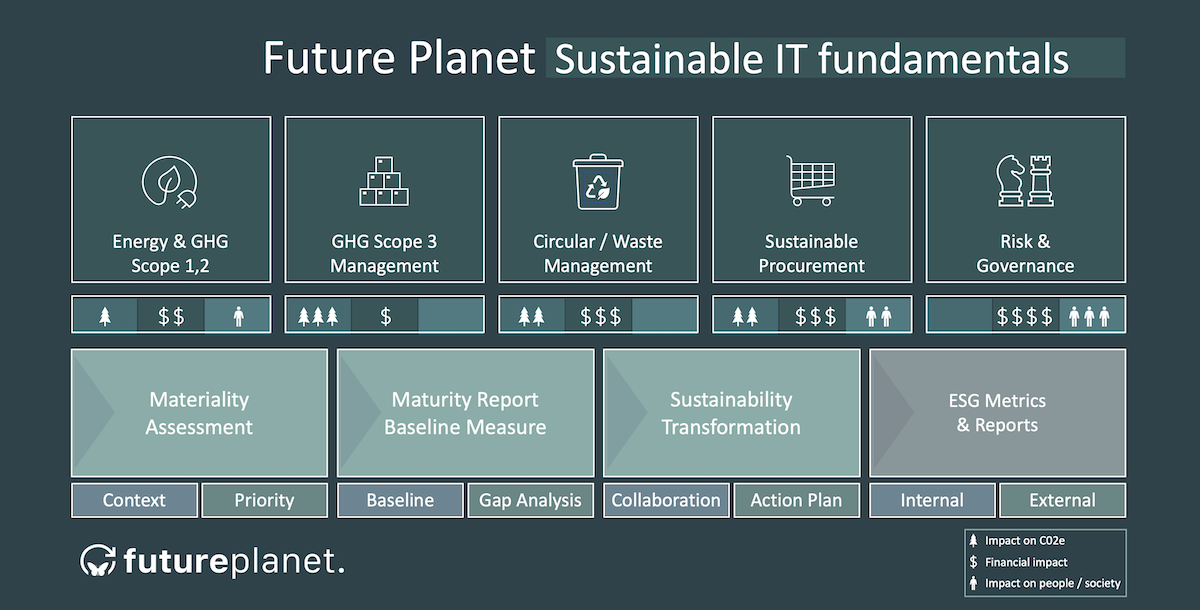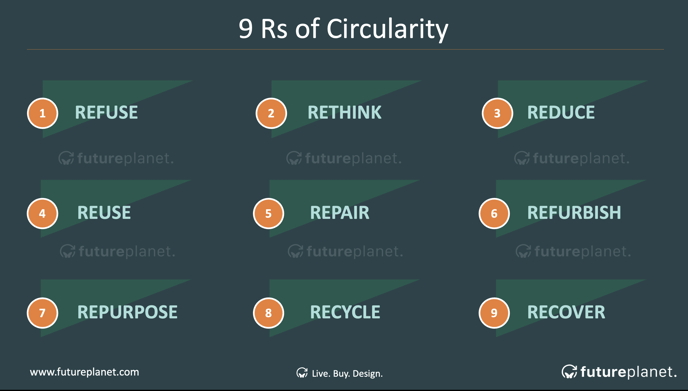
Could Sustainable IT be the backbone?
With an increased focus from regulators, investors and stakeholders, enterprises are coming under pressure to deliver on their sustainability promises. The CIO occupies a unique position to both help the companies to achieve overall ESG goals, and drive sustainability improvements in their own IT organisation. Enterprise ICT represents 8% of the world’s emissions, but only 18% of organisations have a comprehensive sustainable IT strategy.
But the situation is changing – progressive companies are embedding sustainable IT as a core pillar of their overall corporate sustainability strategy.
This post is the first of a three-part series. It provides an overview of Sustainable IT, the key sustainability materiality topics for CIOs and some recommendations for those CIO’s starting out on their sustainable IT journey – the 5 critical areas of focus.
What do we mean by sustainable IT?
One definition of Sustainable IT from Niklas Sundberg’s book Sustainable IT Playbook for Technology Leaders is “the manufacture, management, use, and disposal of IT to meet our present needs without compromising the ability of future generations to meet their own needs”. Sundberg differentiates sustainability in IT from sustainability by IT and IT for society.
At Future Planet, we think of it like this …
Sustainable IT’s purpose is to reduce emissions and deliver positive social impact.
It might be equally described as:
- the practice of environmentally sensitive and socially responsible computing
- the procurement, usage and disposal of IT in a way that optimises its impact on environment and society
- the backbone of a company’s sustainability strategy
Reflecting the importance of the role of the CIO, as partner to the Chief Sustainability Officer, we like this last option. With the right roadmap and plan the CIO can ensure that Sustainable IT is the backbone of sustainability in the organisation.
Where a CIO should start?
The best place to start is with your company’s materiality assessment. A Materiality Assessment is a strategic method and toolset to uncover important risks and opportunities relating to economic, environmental, social and governance issues. It provides the prioritisation of the most relevant sustainability topics for the business and can usually be found in the company’s ESG report which will also outline the enterprise’s ESG targets and ambitions.
(If you are not familiar with a Materiality Assessment, you can find more information here.)
Using the ESG report and the materiality assessment, the CIO can ensure that the sustainable IT program is aligned with the company’s overall ESG ambitions.
The five materiality topics all CIOs should care about.
To consider Sustainable IT as the backbone of the sustainability strategy, there are 5 topics to include. We refer to them as the Sustainable IT fundamentals.

- Energy and GHG Scope 1, 2
Not quite synonymous, but in this context we can bundle Scope 1,2 and Energy as a single topic. Scope 1 emissions are those from directly owned or controlled sources. Examples of scope 1 emissions under the CIO’s remit include purchased electricity for data centres and networks. Scope 2 emissions are indirect emissions from purchased energy and would include indirection emissions from suppliers including electricity for datacentres, networks, servers etc., and energy is, our course energy.
- GHG Scope 3 Management
GHG Scope 3 are indirect emissions both upstream and downstream in the company’s value chain. They are generally much higher than an enterprise’s direct emissions. Examples of IT scope 3 emissions include but are not limited to all ICT hardware and devices including pcs and mobile phones, SaaS (software as a service), data centres, cloud usage etc.
- Circular / Waste Management
With around 50 million tonnes of e-waste produced each year[2] and over 5 bn mobile phones likely to be discarded[3] in 2022 , sustainable device lifecycle management and waste management policies have a key role to play in keeping carbon footprints in check. In Sustainable IT, circular principles should be applied with a focus on reuse, repair and refurbish from the 9Rs of Circularity.

- Sustainable IT procurement
With average supply chain emissions being 11.4 times greater than operational emissions[4] one of the ways to make a big impact is to work with procurement to implement sustainable IT procurement processes. Sustainable procurement also helps to de-risk and future-proof companies and can deliver cost savings.
- Risk & Governance
ESG reporting, legal compliance, standards compliance all need to be considered alongside business continuity planning. But considering that over half the digital data generated by firms is for single use and often sits unused on servers,[5] the CIO should also consider data privacy and security. Storing vast amounts of data may increase the risk of a cyber-attack and also increases the company’s carbon footprint.
Once the relevant materiality topics for IT have been identified and prioritised, the next challenge for the CIO is measuring the baseline and understanding the IT maturity level of each. When these steps have been completed only then can the CIO and team start to build a Sustainable IT plan.
Look out for part 2 in the Sustainable IT blog series which will deep dive into the materiality topics. It will go into more detail on what each of these means for an IT organisation, highlight best practices and give concrete recommendations.
References:
- [1] Sundberg, Niklas. Sustainable IT Playbook for Technology Leaders
- [2] https://dig.watch/topics/e-waste
- [3] https://www.bbc.com/news/science-environment-63245150
- [4] https://www.epa.gov/climateleadership/supply-chain-guidance
- [5] https://theconversation.com/dark-data-is-killing-the-planet-we-need-digital-decarbonisation-190423
